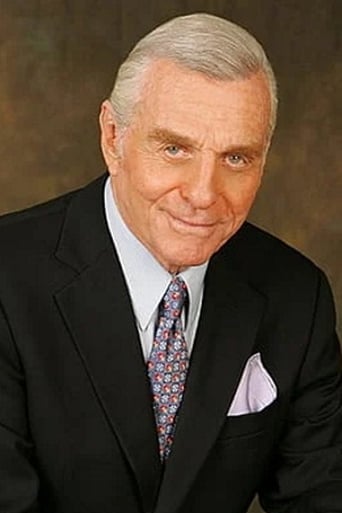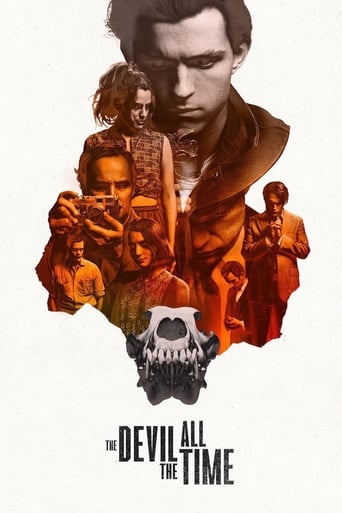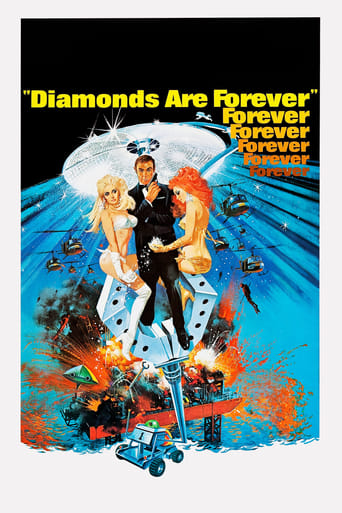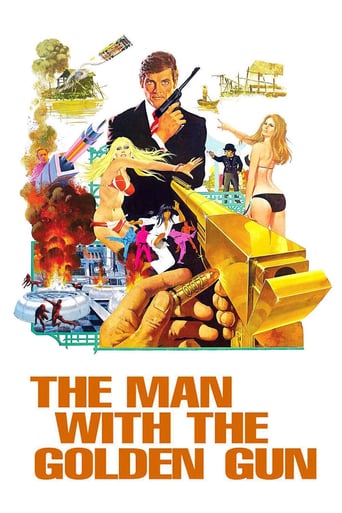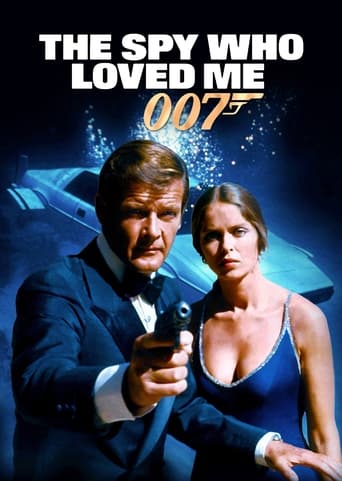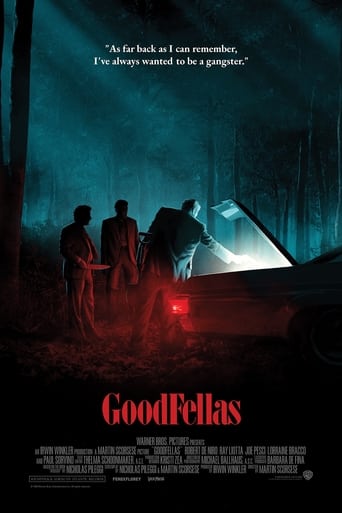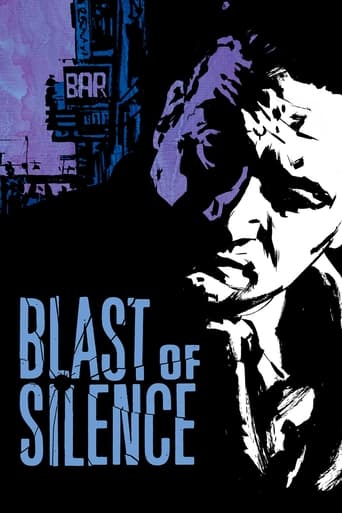
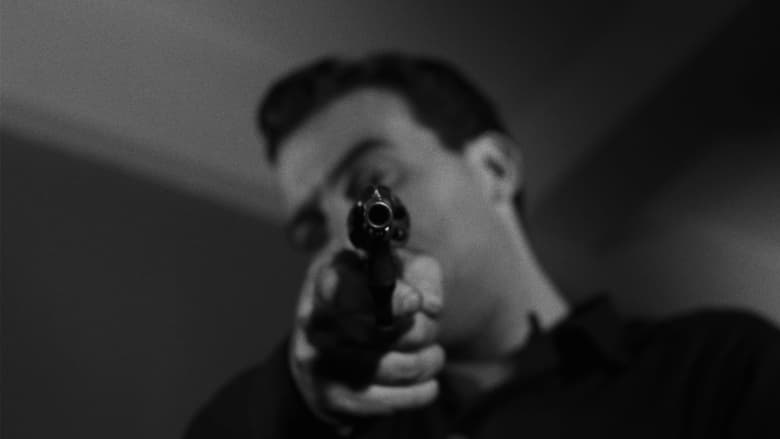
Blast of Silence (1961)
A hired killer from Cleveland has a job to do on a second-string mob boss in New York. But a special girl from his past, and a fat gun dealer with pet rats, each gets in his way.
Watch Trailer
Cast
Similar titles

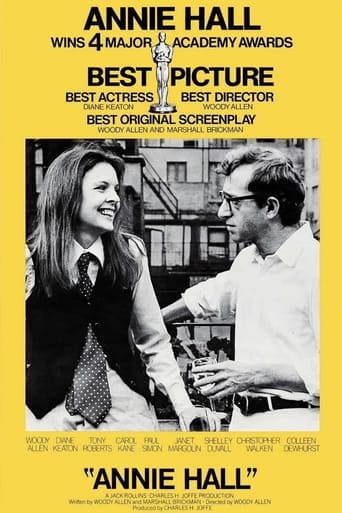
Reviews
The performances transcend the film's tropes, grounding it in characters that feel more complete than this subgenre often produces.
Wow! What a bizarre film! Unfortunately the few funny moments there were were quite overshadowed by it's completely weird and random vibe throughout.
There's no way I can possibly love it entirely but I just think its ridiculously bad, but enjoyable at the same time.
A clunky actioner with a handful of cool moments.
If you watch "Blast of Silence", I strongly recommend you watch the accompanying making of featurette featuring Allen Baron reminiscing decades later about the film. This is because it really helps you appreciate how good the movie is. After all, although the film looks very professionally made, it was assembled with a shoestring budget. In fact, the budget was so tiny that the writer/director, Baron, was forced to act in the lead. This is pretty funny, as he was just perfect in this role--yet this was only his second (and last) acting credit! I would really love it if young filmmakers today watched BOTH to get an idea of economy in filmmaking and that you don't need huge budgets nor big names to make a decent film.As for "Blast of Silence", it's a wonderful noir-like film. I say 'noir-like' because it's a lot less like an American film noir picture and more like one of the next generation that including the French noir films. In many ways, this film is comparable to those of directors like Melville--very compactly told and with little in the way of filler or remorse. Additionally, I kept thinking to myself that Allen Baron sure bore a strong similarity to one of my favorite gangster actors, Lino Ventura--the look and the style were clearly similar.The story is simple. A cold assassin named Frank Bono (Allen) is in New York to make a hit for the mob. However, he's got a few days to kill. This along with a betrayal by one of his 'associates' take Bono off his game. While the hit goes off pretty much as planned, Bono uncharacteristically shows that his nerves are on edge and he's tired of the life--both things which make him a liability.The film is told very well and I loved most of it. However, like too many gangster films of the 1940s-60s, there is an unnecessary narration. While Allen must have been thrilled to get the character actor Lionel Stander to narrate (and his voice was perfect), I don't think it added anything to the film and could have easily been eliminated. Still, it is a much better than average crime film--and a marvelous example of inexpensive filmmaking. Ironically, Allen went on to have a very long career...but almost completely with television and not in film despite the quality of this production.
U.S. Supreme Court Justice Potter Stewart said about hard-core pornography that he could not define it, but he knew it when he saw it. I feel the same way about film noir--I cannot define it, but I know it when I see it. And, in my estimation, this movie is quintessential noir. It is the story of a self-described loner, Frank Bono, who has been hired to kill a small-time mob operative in New York City. The filming, in black and white, is in a style that perfectly matches the seedy story being told. The movie has the look of a low budget effort, which indeed it is, and this creates an ideal atmosphere for the downbeat tale that is being told. It would be hard to fake the authenticity conferred by the low production values and the use of relatively unknown actors. The filming effectively uses contrast and shadows, a hallmark of film noir. There are no self-consciously arty shots. Much of the movie is filmed against a backdrop of New York locations. The New York settings play such an import role in establishing time and place that there is an extra of the DVD presenting details on the locations with a lot of before (1960) and after (1996 and 2006) shots. The unusual second person narrative, delivered in a suitably gravely voice, allows for getting to know Frank at a depth uncommon for this type of movie. We see how Frank drifted into his profession, how he had yearnings (or fantasies) about how he could have turned out differently, such as an architect or engineer. He sees a bridge and says to himself that he could have designed that. Frank prides himself on being a loner, a quality that he feels is essential to his job; he makes comments to himself like, "If you want a woman, buy one. In the dark, so she won't remember your face." However, during the course of the movie he is challenged to examine his isolated lifestyle.The sharp, cynical dialog raises this movie several cuts above a typical B movie. The opening scene gives you an immediate insight into how Frank views the world and alerts you to memorable dialog that is to come: "Remembering, out of the black silence you were born in pain. ... You were born with hate and anger built in. Took a slap on the backside to blast out the scream, and then you knew you were alive. Later you learned to hold back the scream and let out the hate and anger another way."The jazz score is effective.This is worth viewing and is not just for lovers of film noir.
Allen Baron established himself in 1961 as one of America's most promising new filmmakers with Blast of Silence, a noir thriller that he wrote, directed and starred in. He practically disappeared from the industry afterwards, directing only a handful of other projects that haven't lasted the test of time and mostly working in the television field, but his debut feature lives on as a gritty, atmospheric work of art. Immediately, the film explodes onto the screen, surrounding the viewer with sounds of a child being born, as we are narrated through child birth and find ourselves inching closer and closer to a distant light. The style is unique and very aggressive, as Baron is essentially giving birth to his audience into the world he's about to shove us down.The premise is a simple one, stripped down to it's essentials as Baron's hit-man Frank Bono is sent from Cleveland to New York in order to perform a job. It's a standard pulp set-up, but Baron constructs it all in a bold and innovative fashion. For starters, most of the dialogue is told through narration, but the narrator is his own character and tells everything from the second-person. Baron creates Bono as his audience, having the narrator refer to the character as "you", telling us what is happening in our mind in response to the surroundings. It's an absorbing technique that draws you in quickly and he utilizes it for the entire picture.We are constantly reminded of how Bono wants to be alone, but over and over he finds himself having to confront one person or another, be it an old flame or an overweight gun dealer and his pet rats. Baron surrounds us in chaos, a technique which gets us to deeply appreciate the serenity of isolation we are often told about. There's not much violence in the picture, but when it does come on screen it is surprisingly graphic for it's time. Thanks to some quick, chaotic editing, each moment of violence is unsettling and as aggressive as the style itself. We see Bono walk the streets of New York casually, but after seeing the violence that he is capable of this simple act takes on a much more grim and intimidating tone. The whole film has a very gritty, bleak atmosphere that is perfectly contrasted by the seasonal setting, occurring in the period from right before Christmas Day into the New Year.Blast of Silence is just what it's title suggests, an explosion of an isolated creature into a world that he wasn't ready for; or maybe it wasn't ready for him. Constantly it feels like Bono doesn't belong, and Baron utilizes this to give the film an uneasy tone, as if something dangerous could be coming at any turn. There's a theme of social unrest that lurks in the background at all times and Bono is just another of the many unruly citizens who occupy our common streets. It's a shame that Baron didn't continue displaying his immense talent after this one, because it really is one of the finest debut features I've come across.
I recall finding exactly one book on film in the big university bookstore in 1960, a collection of reviews from Newsweek's movie critic. My point is for younger folks who may not know that movies were not considered an art form until the late '60's. Before then, film was deemed a popular entertainment not worthy of serious study. Since Hollywood monopolized the industry and measured success in terms of box office, reducing the medium to little more than a commercial enterprise was not entirely misplaced. This is the landscape in which a nervy little indie like Blast of Silence tried to find some footing. Much of the early over-praise, I think, came from a growing number of folks who wanted film-making to declare greater independence from the Hollywood behemoth- certainly a praiseworthy desire. And, no doubt, the look and feel of the movie is unlike anything Hollywood turned out at the time. Fifty years later, what impresses me most is how competently the film is made, even considering the shoestring budget. The technical aspects, especially the cinematography, are as good as those found in contemporary studio products. The cross-cutting and editing of the night club sequence also show that Baron and crew could handle complex scenes as well as the many long master shots.At the same time, I'm curious as to where the film was shown since Universal did release it. The commercial appeal would, it seems, be limited by several important factors--- short length, over-narration, and unrelenting emphasis on alienation. There are no sympathetic characters; even the promising Lori (McCarthy) proves unreliably devious. Then too, the comparison with controversial Italian director Antonioni is not inapt considering the generally despairing mood and theme. Baron's one-man- effort thus appears neither art film nor commercial product, but something in-between, and where such a hybrid would be shown in those days is intriguingly unclear to me.Despite the rather esoteric character, I think the film has a continuing appeal, maybe not so much as entertainment, but as an object of aesthetic interest. Sure, the plot plus the character of Frank Bono owe a lot to Irving Lerner's similarly themed Murder by Contract of two years before. But the results here carry the whole notion of the outsider to an unusual degree. Even the claustrophobic streets amid towering skyscrapers project a crushing impersonality. At the same time, Bono kills, not only to succeed as a professional killer, but also, -if the narration is to be believed-, to relieve the victim (beneficiary) of the hopeless burden of life. Thus Bono eases into his own death when it comes. At a time when Ike was in the White House and Ozzie and Harriet were on TV, a darker counterpoint is hardly imaginable. As Vietnam would unfortunately demonstrate, it was indeed a film ahead of its time.


